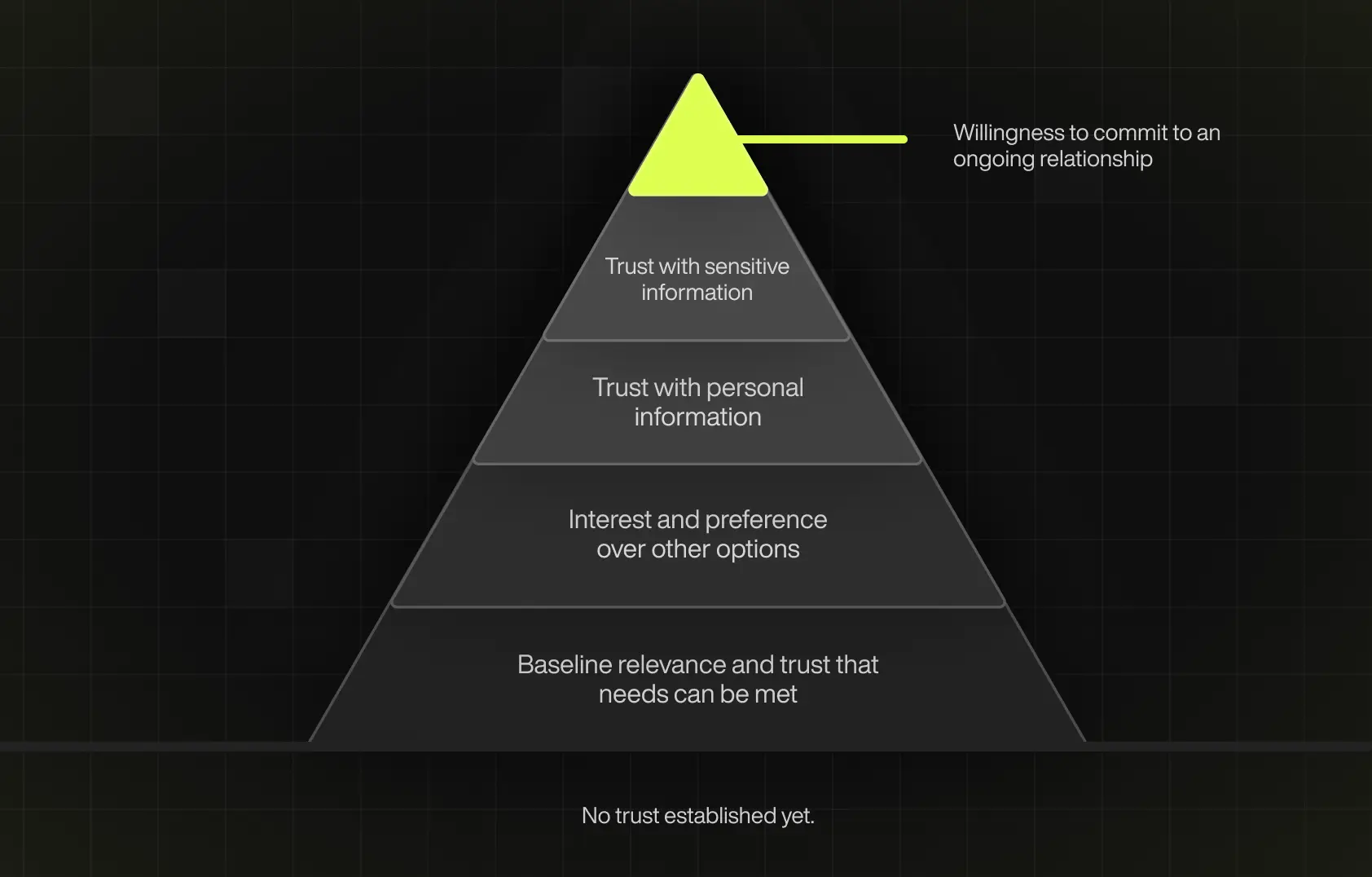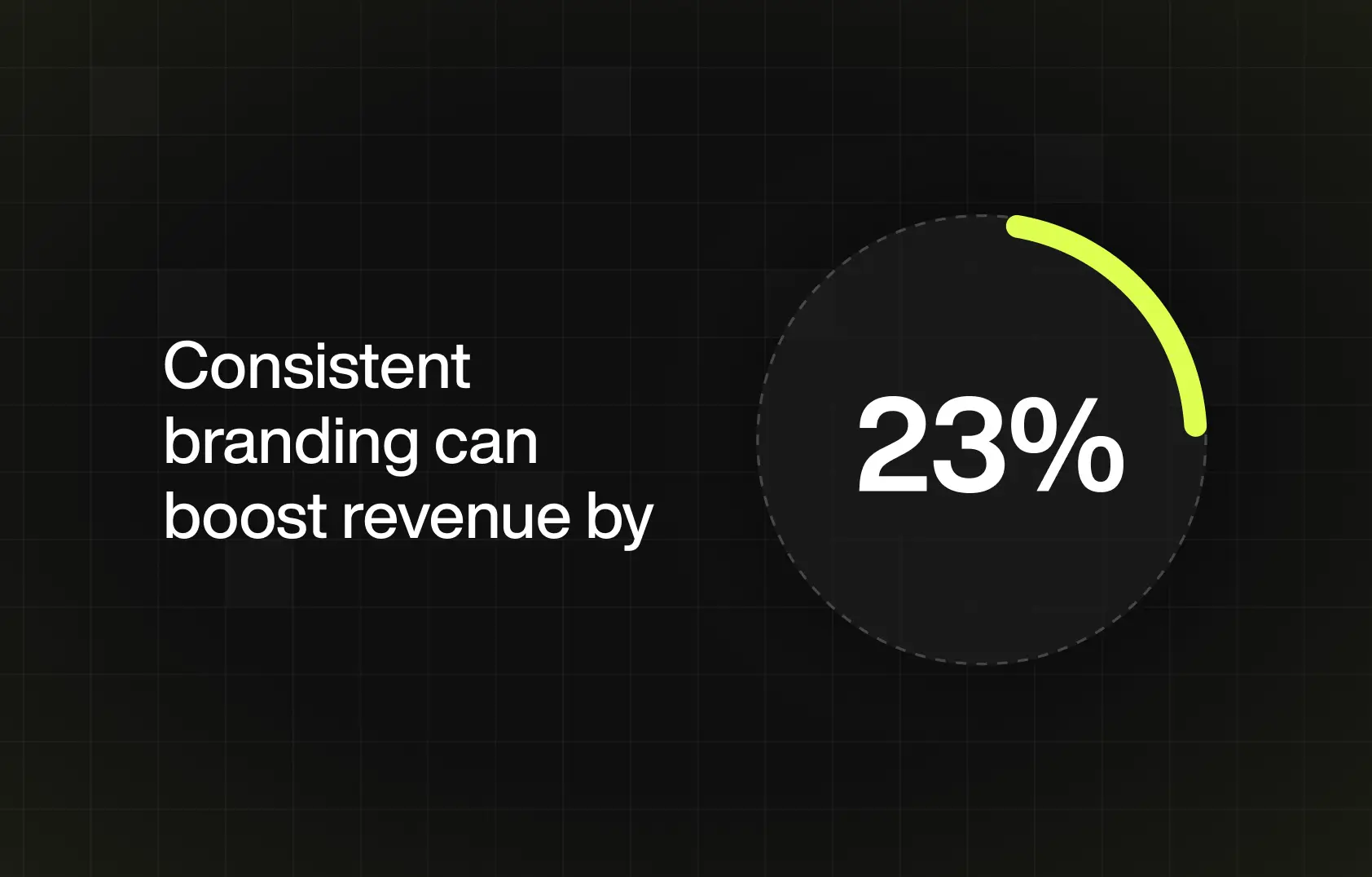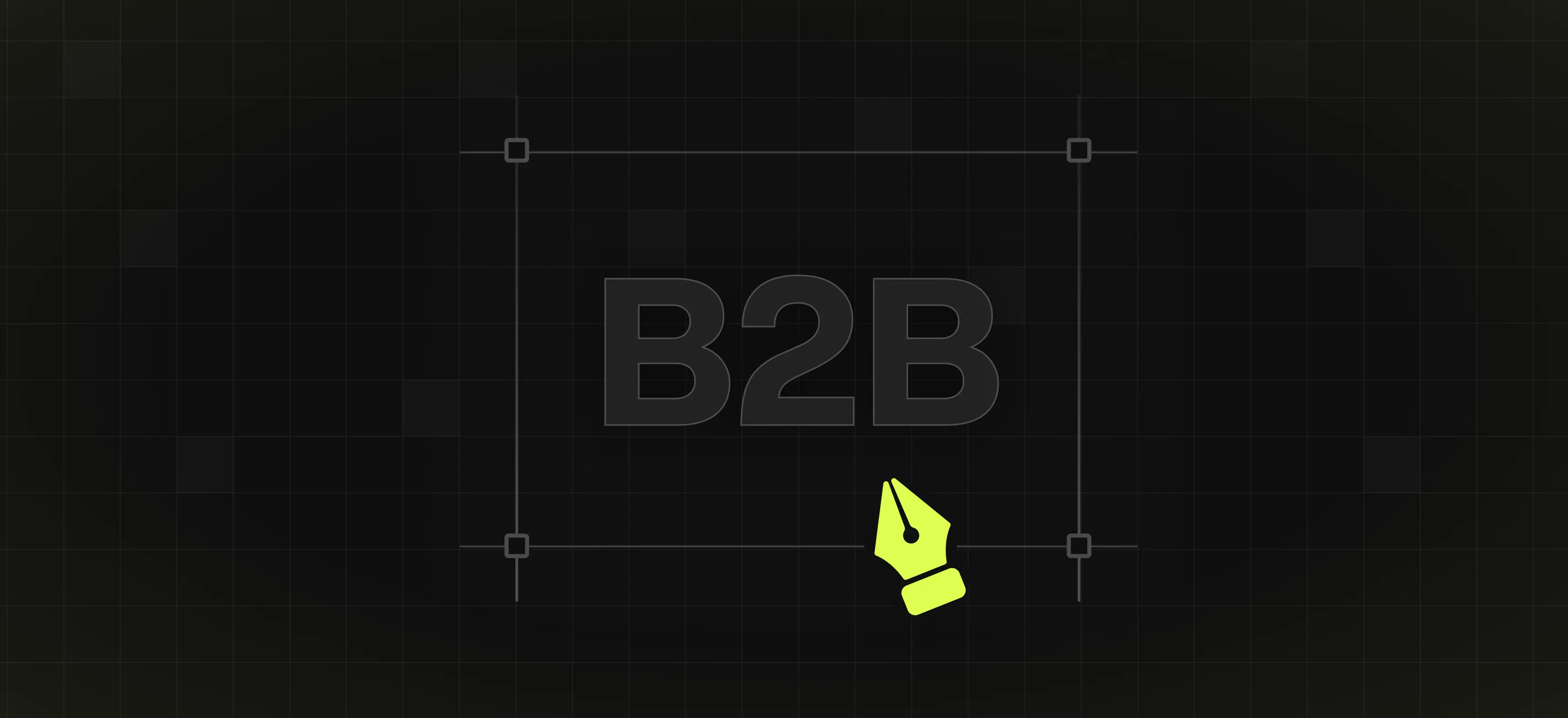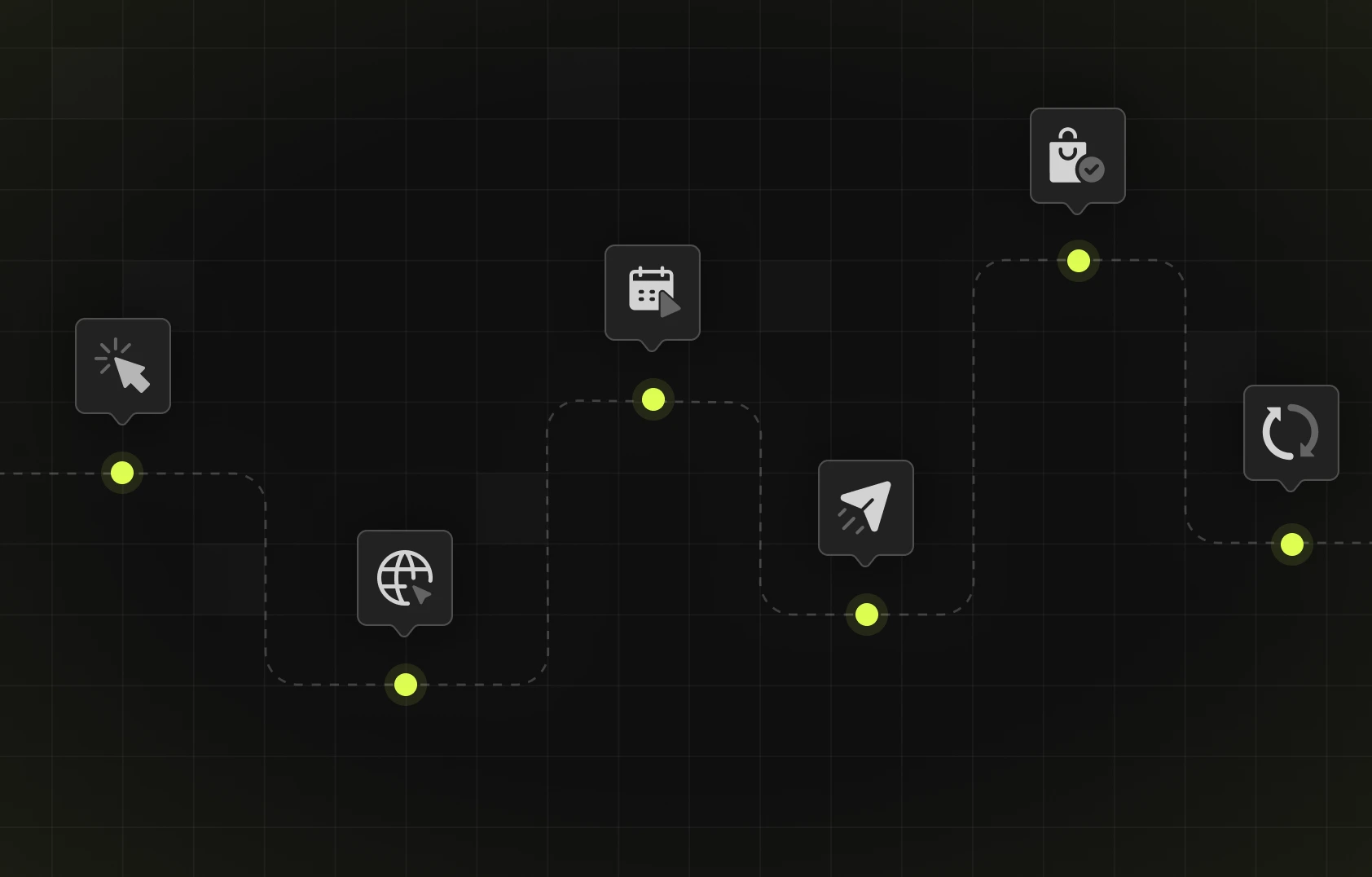Table of content
Summary:
Branding in B2B SaaS plays a direct role in how companies acquire customers, keep them engaged, and even convince investors they’re worth backing.
In B2B Saas branding, here’s what matters most:
- Credibility at first glance - a strong brand signals reliability and competence before a sales conversation even begins.
- Clear communication for different audiences - executives, managers, and end users each need tailored messaging that speaks to their priorities.
- Strategic positioning - it’s important to choose whether you’re aiming for a new space or dominating the existing one.
- User experience as a brand touchpoint - every detail of product design reinforces (or undermines) trust.
- Scalable structure - the way you organize your brand across multiple products impacts clarity and growth.
- Consistency through the funnel - branding shapes perception from the first ad someone sees to long after they’ve signed.
- Proof in the numbers - from reduced acquisition costs to stronger retention, brand impact can and should be measured.
Brand as a growth engine - B2B SaaS branding strategies
In SaaS, standing out is tough. What feels new today becomes standard tomorrow. That’s why buyers look beyond features. They want to know if your company is credible and built for the long haul - and that’s where brand comes in. It builds confidence before the demo and creates loyalty that features alone can’t. For all those swimming in the B2B SaaS world, we’ve prepared a comprehensive guide to the best of B2B SaaS branding strategies. If you’re wondering how to rise above the noise, just read on.
The shift - from marketing asset to revenue driver
Brand as a concept has come a long way from decoration in the form of logos, color palettes, or fancy mobile or web design solutions. Today, a strong brand is there to build trust, which in turn reduces friction and can even accelerate growth. It signals to buyers/users (and investors) that your company is worth their time - and their money.
Here are some of the main reasons why right branding matters so much:
- Customer Acquisition Cost (CAC) - a trusted brand makes it easier to attract leads and close deals, and the results are lower costs of acquiring each customer.
- Churn reduction - when customers feel confident in your company, they’re more likely to stick around.
- Sales velocity - buyers move faster when they trust the brand behind the product, which can potentially speed up your sales cycles.
- Funding confidence - investors will opt for SaaS products that can scale and capture market attention.
Looking good and being memorable still matter, but brand is now about more than that. It helps you win customers and keep them coming back, all with a goal of growing your business over time.
Trust as currency in B2B SaaS
Buyers are constantly weighing risk: Will this company stick around and support their growth? However, today, many buyers know that they can get the answer to this question even before the first conversation happens - and it’s all thanks to branding.
Enterprise buyers, on the one hand, care about reliability and longevity. More than a simple product, they are looking for a partner. If your brand is strong, it signals stability and professionalism, both of which enterprise buyers look for.
Startups, on the other hand, want confidence that you can scale with them. Think things like.
- Clear messaging,
- A confident tone,
- Visible expertise,
- Social proof
Those are all core elements of good branding, which help show startups that you’re capable and dependable.

Messaging frameworks that drive growth
While visuals are important, branding also implies the way you talk about your product.
“Words are singularly the most powerful force available to humanity” - Yehuda Berg
The words you use carry your brand and make people trust you. That said, keep in mind that different people care about different things, even within the same company.
Think about it like this:
Tailoring your message to each persona
Executives are looking at the big picture. They want to know your product will actually drive results, keep their data secure, and scale as the company grows. Managers, on the other hand, care about whether their teams will actually use it and get more done. And end users? They just want to make their life easier and solve the problems they deal with every day.
When your messaging hits each of these points, your brand suddenly feels relevant to everyone involved. Executives trust that you’re serious, managers see the practical benefits, and users feel like your product was made for them.
B2B SaaS branding strategies - category creation vs. category ownership
When it comes to brand strategy, there are usually two big plays you can run. The first one is category creation. This is when you draw a brand-new line in the sand and say, “This is what we do, and no one else does it quite like this.” Think about how Slack didn’t call itself just another chat tool, but created the idea of a collaboration hub. Or how companies like Gong popularized the space of Revenue Intelligence rather than just calling themselves sales analytics. Category creation is powerful because you get to set the rules, but it also means you have to educate the market from scratch.
The second strategy is category ownership. It implies taking an existing space and becoming the name people think of first. You don’t invent something new, but aim to dominate what’s already there. A classic example is Shopify in e-commerce platforms - they didn’t invent something new, but they quickly became the market leader. It’s a good tactic because you’re betting on an idea that already exists, but it also means you’re constantly proving why you’re the best choice among competitors.
Both strategies can work. Which one you should choose depends on many different factors. Your product, your goals, and your resources are among the most important ones.
Design as an extension of brand strategy
In SaaS, every interaction is part of your brand. The important details of custom SaaS design, such as:
- How a user navigates your dashboard,
- How smooth onboarding feels,
- How your loading states show up, etc,
send signals about who you are as a company.
If the product feels clunky or confusing, users will question your reliability. On the other hand, a thoughtful user-centered design that feels consistent reinforces brand credibility. In other words, it’s also important to look at your brand as what people experience every time they use your product.

Brand architecture for SaaS growth
As SaaS companies grow, their product lines usually expand too. The question becomes: how do you structure the brand around it all?
There are three common approaches:
- Branded house
This is when everything lives under one master brand - you don’t have 10 separate brands, just one name that stretches across multiple products. The advantage? All marketing efforts build the same brand equity, which makes it easier for customers to trust your new products. The risk is that if you branch out too far, buyers can get confused about what you really do.
- House of brands
Here, each product gets its own standalone brand, with its own identity. This works well when products serve different markets or solve different problems. The downside? You have to invest in building and maintaining several brands, which can be costly and harder to unify.
- Hybrid
A mix of both. Here, each brand has its own recognition, but they’re clearly tied to the parent brand. It’s flexible, but also complex to manage because you need to keep both the parent and sub-brands consistent without one overshadowing the other.
Here’s a quick explanation of different approaches paired with some of their best examples:
Aligning brand with the buyer journey
A strong brand is one that’s built across the entire buyer journey. In SaaS, especially, trust can form (or fade) at every stage, from the first time someone hears your name to long after they’ve become a customer.
In accordance with the buyer journey, brand touchpoints look something like this:
- Awareness - this is where people first discover you. Your category point of view, thought leadership, and the way you position your product set the tone.
- Consideration - once buyers are comparing options, credibility matters. Case studies, testimonials, and a consistent design system all signal that you’re not just another option, but a highly reliable one.
- Decision - this is the make-or-break moment. Trust signals like security badges, compliance, and clear ROI stories can tip the scale in your favor.
- Retention - after the deal is signed, the brand still matters. Onboarding, customer marketing, and even the sense of community you build play a huge role in keeping customers around.
When buyers see your brand backing up the whole journey, it goes from being a decoration to becoming proof you’re worth betting on.
.webp)
Metrics that prove the brand’s ROI
One of the biggest misconceptions in SaaS is that brand can’t be measured. The truth is, just like with UX design strategy, you can track how your branding strategy impacts growth. Even better, we are not talking about vanity metrics like impressions and followers, but hard numbers.
Here are some of the KPIs that actually show whether your brand is pulling its weight:
Put simply, a strong brand lowers your cost to win new customers, makes deals move faster, and keeps people around longer. In SaaS, those three things - lower CAC, higher velocity, and stronger retention - are exactly what fuel growth.
Pitfalls that hold SaaS brands back
Most of the mistakes in B2B Saas branding strategies come from treating the brand as surface-level polish instead of a tool for growth. Here are a few common mistakes that can hold your SaaS brand back:
- Focusing only on features -instead of listing tools and dashboards, show how those things help them hit revenue targets faster or cut the time their team spends buried in spreadsheets.
- Overlooking internal adoption during a rebrand - you can spend six months on a shiny new identity, but if your sales deck still has the old logo or your team’s Slack is full of outdated graphics, customers notice. If the people inside the company don’t live the brand, nobody outside will believe it.
- Letting marketing and product feel disconnected - a bold campaign that promises simplicity means nothing if the product onboarding feels like a maze. When marketing says one thing but the product says another, trust disappears.
- Treating branding like a one-time task - Branding isn’t a box to tick every few years. It’s an ongoing process that evolves with your company and market.
FAQs: What SaaS leaders ask about branding
Do we need a strong brand before raising a round?
Not necessarily. Think of it as an amplifier, not a prerequisite. Investors back elements such as traction, market potential, and team strength first. That said, a clear, credible brand story definitely helps you stand out and makes your pitch more memorable.
Can the brand lower CAC?
Yes. A strong brand builds trust. It means that prospects are more likely to come in warmer and move through the funnel faster. Over time, that reduces reliance on paid acquisition and lowers CAC.
How do you balance product-led vs. brand-led growth?
It’s not either/or. Product-led growth gets people in the door; branding shapes how they perceive value and stick around. The product is the engine, the brand is the story that makes people care.
When is the right time to rebrand?
When your current brand no longer matches reality (and when we say reality, we mean your product, market, or audience). If prospects don’t “get” what you do, or if your team cringes at sending out the deck, it’s probably time.
From pretty to powerful - building a brand that sells
A strong brand is there to make your life easier. It helps deals move faster and keeps customers around longer. Not to mention, it makes people more likely to choose you over competitors. That’s exactly what we do at Devolfs.
With years of experience in the business, we help SaaS teams turn all those little brand moments into something that works together, with the one goal - to grow your business. From figuring out how to talk to the right people to designing experiences that feel solid and trustworthy, we make sure your brand is more than decoration. Your product might be great, but a brand that actually backs it up? That’s what makes buyers commit. If that’s something you’re interested in, don’t hesitate to contact us.





%201.svg)






